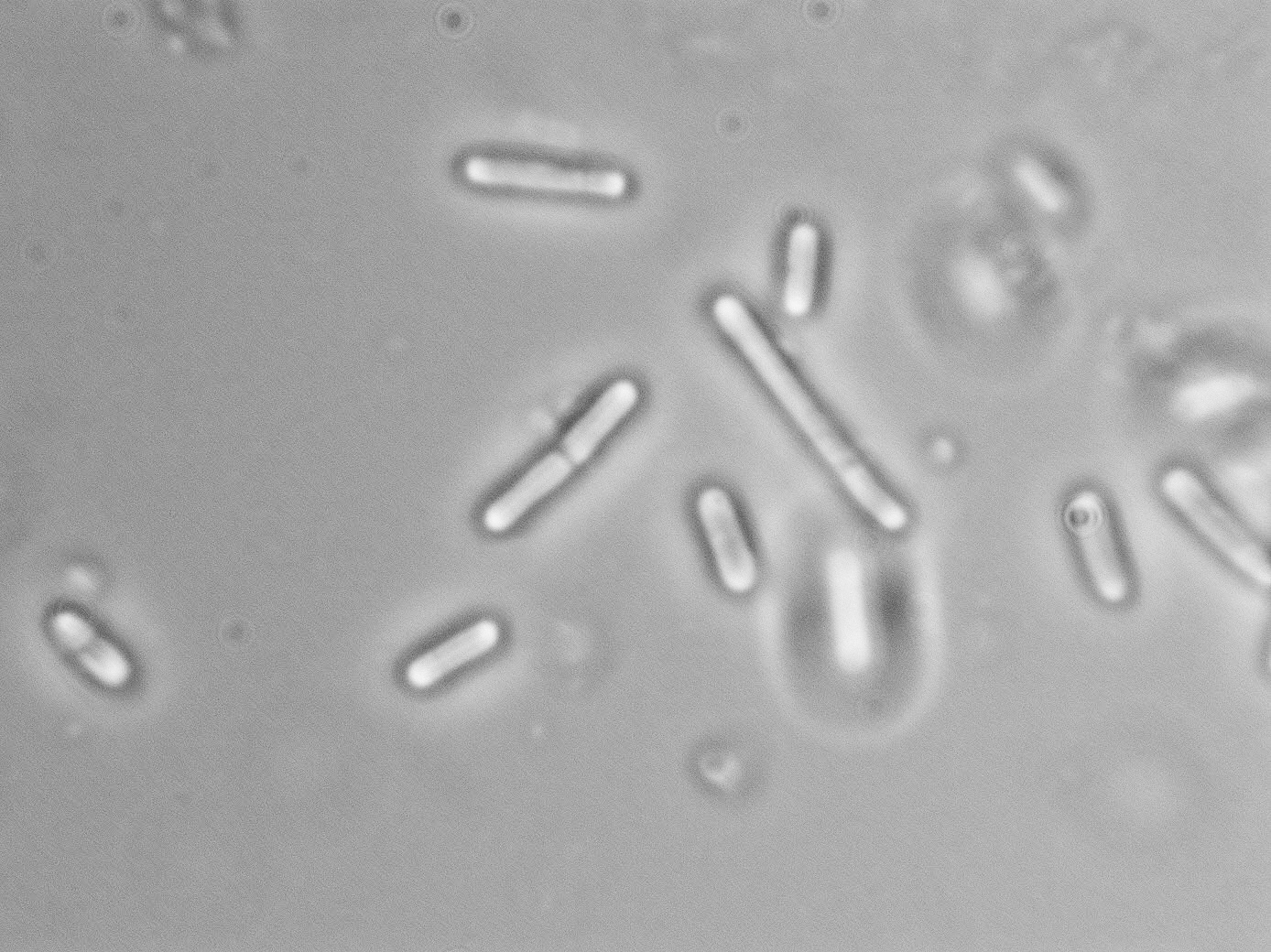Genus/species: Lactobacillus delbrueckii subspecies delbrueckii, lactis or bulgaricus
Gram Stain: Positive
Morphology:
Cell: rods that may appear long and filamentous
Colony: yellow/ off-white, raised, large, spherical
Liquid Growth: dispersed
 |
 |
Physiological Traits:
Produces lactic acid as the sole end product. Their growth substrates can be amygdalin, lactose, maltose, D-Mannose, salicin, sucrose, or trehalose. They can live with or without oxygen. Nutrients requirements include: pyridoxamine phosphate, thymidine acid, casein, and histidine and seride peptides are stimulatory to their growth. Lactobacillus bulgaricus requires pantothenic acid and niacin.
Ecological Traits:
They occur in nutrient rich and acidic habitats. They can be found in milk, cheese, yeast, grain mash, human intestine, grapes, and grape must/wine.
Distinguishing Features:
They are non-motile, do not produce spores, and their optimum growth temperature is 37-42 degrees Celcius.
Role in wine:
They can be found on grapes and in musts/wines. They are malolactic bacteria that break down malic acid in wine and produce lactic acid. This reaction decreases the acidity of wine, and can be useful if a pH is too low. They also produce acetoin and diacetyl which can greatly contribute to the wine aroma profile.
Sensitivities:
- SO2: > 50mg/L
- Sorbate: YES
- DMDC: NO
- ph: <3.2 li="">
- Acids: fumaric
- Ethanol: >14.0%
- Anaerobiosis: NO
- Heat: Pasteurization, YES
